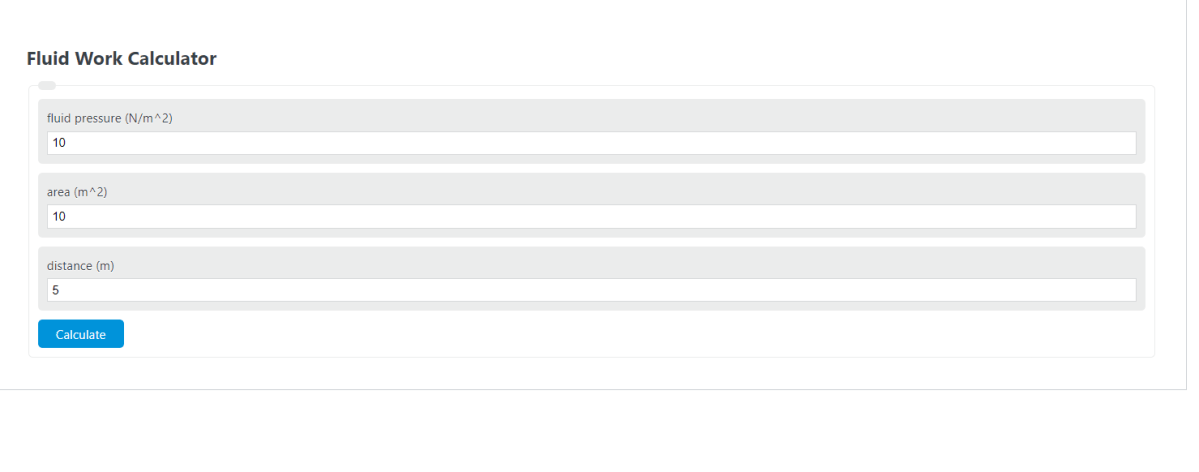Enter the fluid pressure (N/m^2), the area (m^2), and the distance (m) into the calculator to determine the Fluid Work.
- All Physics Work Calculators
- Heat Engine Work Calculator
- Velocity to Work Calculator
- Pressure Volume Work Calculator
Fluid Work Formula
The following formula is used to calculate the Fluid Work.
Wfluid = P*A*s
- Where Wfluid is the Fluid Work (Joules)
- P is the fluid pressure (N/m^2)
- A is the area (m^2)
- s is the distance (m)
To calculate the fluid work, multiply the pressure, area, and distance together.
How to Calculate Fluid Work?
The following example problems outline how to calculate the Fluid Work.
Example Problem #1
- First, determine the fluid pressure (N/m^2). In this example, the fluid pressure (N/m^2) is given as 5 .
- Next, determine the area (m^2). For this problem, the area (m^2) is given as 5 .
- Next, determine the distance (m). In this case, the distance (m) is found to be 10.
- Finally, calculate the Fluid Work using the formula above:
Wfluid = P*A*s
Inserting the values from above and solving yields:
Wfluid = 5*5*10 = 250 (Joules)
FAQ
What is fluid work in physics?
Fluid work refers to the work done by or against a fluid as it moves through a system. It is calculated by multiplying the fluid pressure, the area through which the fluid moves, and the distance the fluid travels. The unit of measurement for fluid work is Joules (J).
How does fluid pressure affect fluid work?
Fluid pressure is a key component in calculating fluid work. Higher fluid pressure means that more force is exerted over a given area, leading to an increase in the work done by or against the fluid. Essentially, as fluid pressure increases, assuming the area and distance remain constant, the fluid work also increases.
Can fluid work be negative?
Yes, fluid work can be negative. This occurs when the direction of the force exerted by the fluid is opposite to the direction of motion. In practical terms, negative fluid work indicates that work is being done against the fluid, such as when a pump moves fluid against a pressure gradient.
